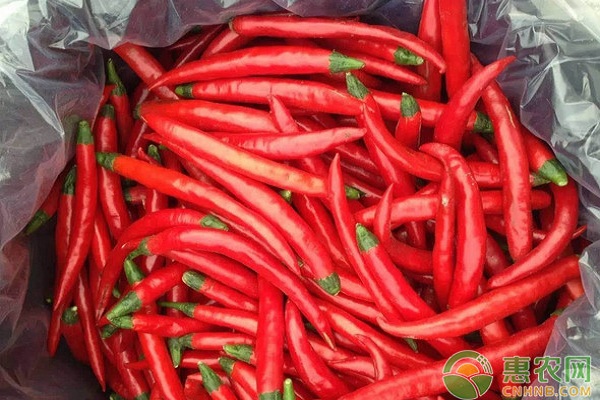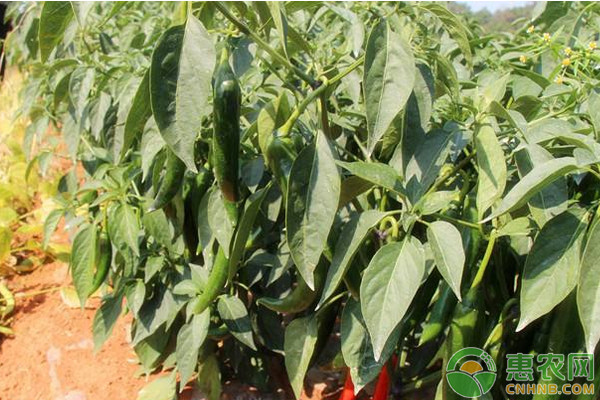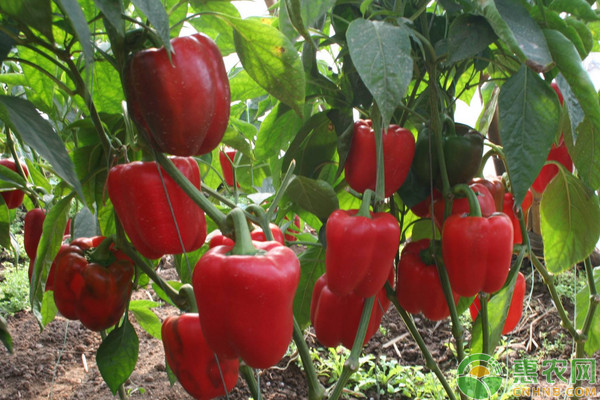There are many kinds of peppers, the market demand is large, and the cultivation area is increasing. In recent years, with the transfer of rural population, the labor force engaged in agricultural production has gradually decreased, and the labor cost has become higher and higher, which has restricted the development of vegetable cultivation such as pepper. The mechanization technology of key parts of pepper production is to use modern mechanical equipment for production operations in pepper seedling, transplanting and soil fertilization, deep tillage and ridge ridges, to alleviate the shortage of labor, high labor intensity and high production cost of pepper production, thereby improving production. Efficiency, to achieve the purpose of cost-effective. 1 Chili mechanized production technology 1.1 variety selection Choose pepper varieties with good early maturity, high quality, high yield, disease resistance, high fruit set rate and good commercial quality. 1.2 nursery Using Baoji Dingsheng 2BS-4 multi-function plug-on seeding machine to carry out seedling seedlings, the machine adopts the principle of negative pressure suction and positive pressure sowing, and integrates matrix filling, pit, sowing and sweeping, and the performance is stable. 1 capsule, 1 to 300 seeds per hour, and the leakage rate is less than 5%. After sowing, the trays are placed in a double-arched umbrella-shaped wide-body steel frame greenhouse. The temperature is 25-30 °C during the daytime and 15-20 °C during the night. If the temperature is above 25 °C during the daytime, the seedlings grow rapidly and are extremely slender. The temperature in the shed is reduced to about 20 °C, so that the seedlings grow slowly and robustly. After the emergence of the seedlings, keep the substrate moist, and properly control the water in the later stage. Choose to spray water on sunny days, and the relative humidity of the air should be controlled at 70%-80%. 1.3 Mechanized fertilization and soil preparation 1.3.1 Mechanized fertilization Before the mechanization work, it is necessary to clean the residual stalks and debris in the shed and pick up the residual mulch film. The operation of the Yellow Sea Golden Horse 454 shed king supporting Sasaki CMC500 organic fertilizer spreader, the machine has the characteristics of large capacity, high efficiency and wide variety of fertilizers. Before the production of pepper, every 667 m2 of fully-fertilized farmyard manure 1 t, compound fertilizer (NPK is 15-15-15, the same below) 25 kg as base fertilizer. 1.3.2 Refined land preparation Planting field blocks generally need to be ploughed once a year. After applying the base fertilizer, use the 1.5m wide rotary tiller for the rotation of the Yellow Sea Golden Horse 454 Canopy King. The operation is maintained at a constant speed. Generally, the operation is performed in the second gear. It can reach 0.17~0.20 hm2 (2.5~3.0 mu), the working depth is 15~20cm, and the soil breaking rate is over 90%. After the soil is finely divided, it can significantly improve the physical and chemical properties of the soil and provide a better soil environment for the growth of pepper roots. After 5 to 7 days (days), the ridges can eliminate pests and diseases, which is beneficial to soil microbial activities and improve soil fertility. Do the Shanghai Kangbo 3ZZ-5.9-800 ridge machine operation, set the ridge surface width 60cm, ridge base width 80 cm, ridge height 15 ~ 20 cm, groove width 30 cm, the ridge surface is required to be flat, the ridge row is neatly arranged. 1.4 colonization Before planting, the drip irrigation belt is laid on the surface of the plant. The planting is carried out by the Baoji Dingxiang 2ZB-2 vegetable transplanter for mechanized transplanting. The transplanter has the advantages of intelligent control, simple operation and lower manufacturing cost than foreign transplanters. If necessary, the film can be matched at the same time. Before the operation, adjust the plant spacing, row spacing and planting depth of the transplanter to ensure that the transplanting does not leak the seedlings and does not fall. According to the agronomic requirements of pepper growth, the general plant spacing is adjusted to 35-40 cm, the row spacing is 50-60 cm, the planting depth is 3-5 cm, and the seedling height is 12-20 cm. After planting, timely pour the bottom water to benefit the living tree. After 2 to 3 days (days), make up 1 small water, check the hydration to check whether there is dead seedling, and find that the dead seedlings are hand-planted in time. 1.5 Field Management 1.5.1 Temperature Management Pepper is a warm vegetable, and plants with more than 3 true leaves can be free from freezing at temperatures above 0 °C. During the slow-planting of peppers, the daytime temperature in the shed is maintained at 28-30 °C and 18-20 °C at night; the plants enter the flowering period, the daytime temperature is maintained at 25-28 °C, and the nighttime is 15-20 °C, below 10 °C. Pollination is difficult to succeed, and it is easy to fall and fall. In the result period, the temperature is kept at 25-30 °C during the daytime, 15-18 °C at night, and the temperature above 25 °C is conducive to fruit development and color change. 1.5.2 Water Management Pepper is more drought-tolerant, too much watering can lead to poor root development and affect the normal growth of plants. The water requirement of pepper seedlings is small. After entering the initial flowering stage, the plant growth is accelerated, and the water requirement is increased. After the fruit is expanded, sufficient water is needed, otherwise the fruit will shrink, grow slowly, and the color will be dim. Seedlings should be watered in time after planting. It is best to carry out the temperature increase after 10:00 am. After the seedlings are used, the micro-drip irrigation is used to combine the weather conditions after planting and the growth of the plants to replenish water. The growth period is generally 7 days. (Day) drip irrigation for about 1 time, the soil moisture is kept at about 50%, do not dry or not. 1.5.3 Timely topdressing Capsicum has higher requirements for nitrogen, phosphorus and potassium. In the seedling stage, it promotes the root growth of the plant. It needs to supplement the appropriate amount of phosphorus and potassium fertilizer, a small amount of nitrogen fertilizer, and generally lightly apply the farm organic fertilizer. It is not advisable to apply more urea to prevent the plant from growing. After the differentiation period, increasing the application rate of nitrogen, phosphorus and potassium fertilizer can promote the early differentiation of flower buds and the number of flower buds. If a single fertilizer is applied, the flower bud differentiation will be delayed. Therefore, it is necessary to stabilize the application of flower fertilizer, and the plants are largely flowered and the results are not For a long time, the farm organic fertilizer and NPK compound fertilizer are applied. Before the first harvest to the first harvest, apply 1 000 kg of organic fertilizer and 10 kg of compound fertilizer per 667 m2 to meet the nutrient requirements of plant branching, flowering and fruiting; Nitrogen, phosphorus and potassium fertilizers, after the first harvest, 20 kg of compound fertilizer per 667 m2, generally 1 time of topdressing. 1.5.4 Plant adjustment The suitable growth environment in the greenhouse makes the plants grow vigorously, but it is easy to affect the ventilation and light transmission. The lateral branches with weaker growth at the bottom of the plant should be cut off in time, and the old leaves and old branches in the lower part of the plant should be removed during the fruiting period to increase the permeability between the plants. 2 Pest control Pepper pests and diseases mainly include viral diseases, epidemics, gray mold, mites, whitefly, sassafras, etc., adhere to the principle of "prevention first, comprehensive prevention and control", scientific application of agricultural control, physical control, biological control and chemical control. When using chemical control, the 3WZ51 self-propelled sprinkler conveyor and the stretcher sprayer are used for spraying. The operation is simple, the maneuverability is strong, the atomization effect is good, and the work efficiency is high. 2.1 Disease prevention 1 Capsicum virus disease can be controlled by 1.5% sodium dodecyl sulfate (phytopathogenic) emulsifiable oil 800 times, or 20% morpholinium copper (virus A) wettable powder 500 times solution, 7 to 10 days (day Spray once and spray 3 times. In addition, the double arched umbrella-shaped wide-body steel frame greenhouse has the characteristics of good heat preservation and strong wind and snow resistance, which can prolong the growth period of vegetables and improve the quality and yield of winter and spring solanaceous vegetables. Currently, this type of greenhouse has been in Jiangsu. The Yangzhou area has been widely promoted and applied, and has achieved good social and economic benefits. BTE Hearing Aid BTE Hearing Aid Shenzhen Sunshine Technology Co.,Ltd , https://www.shenzhenyatwin.com

